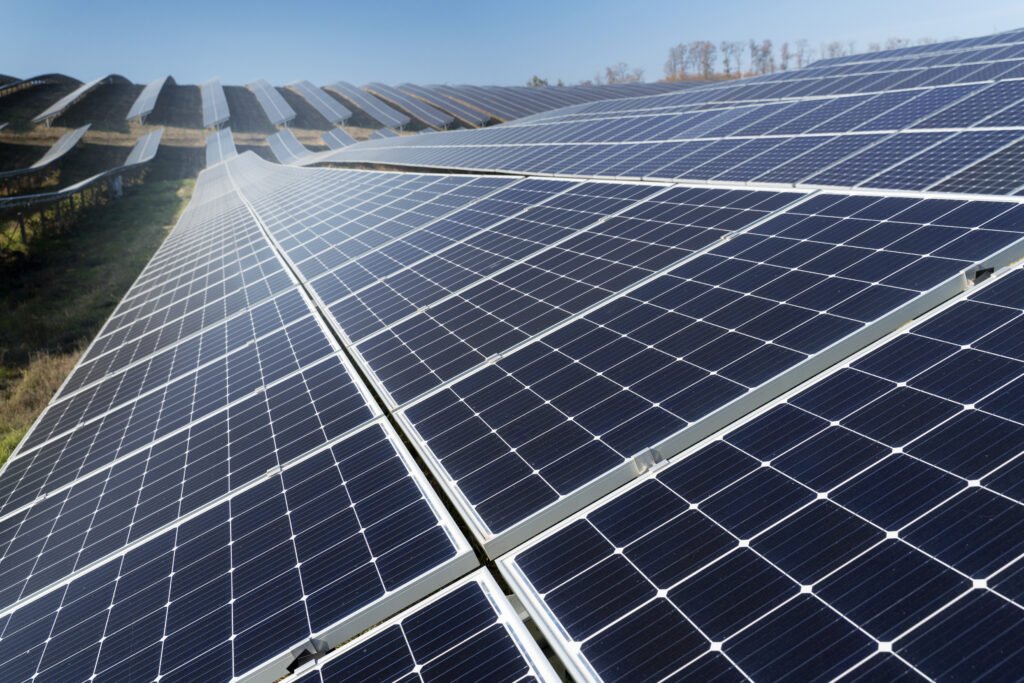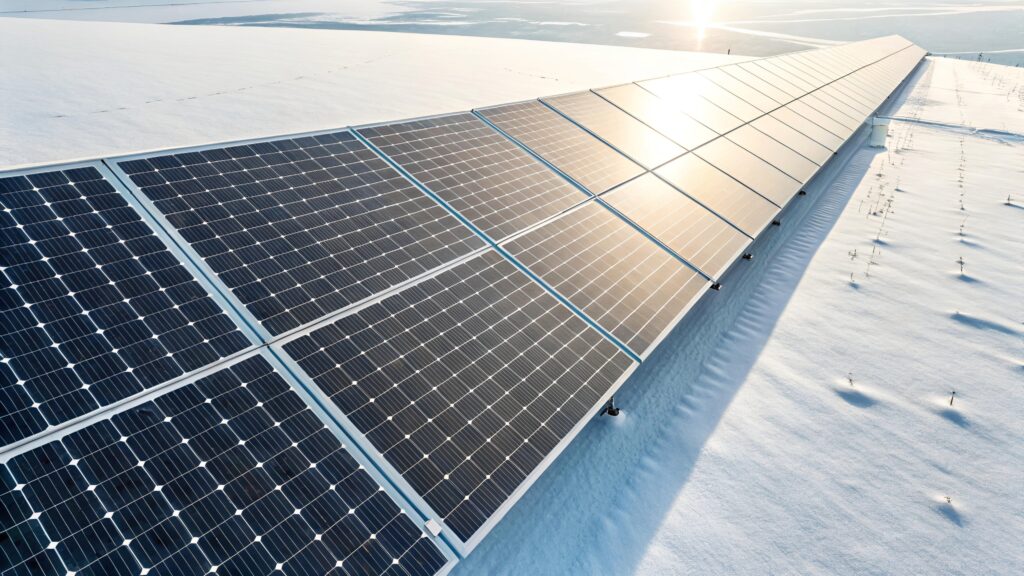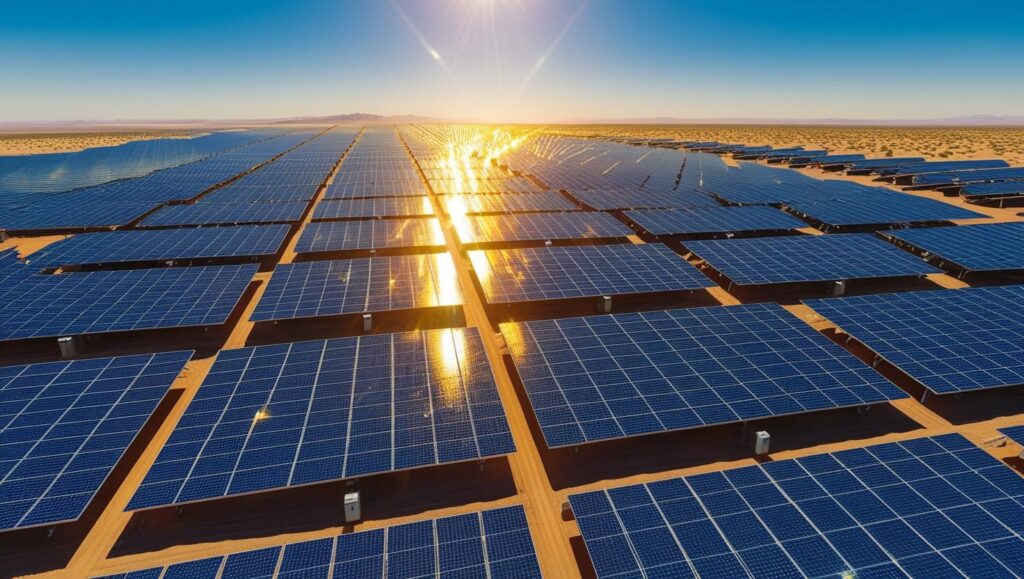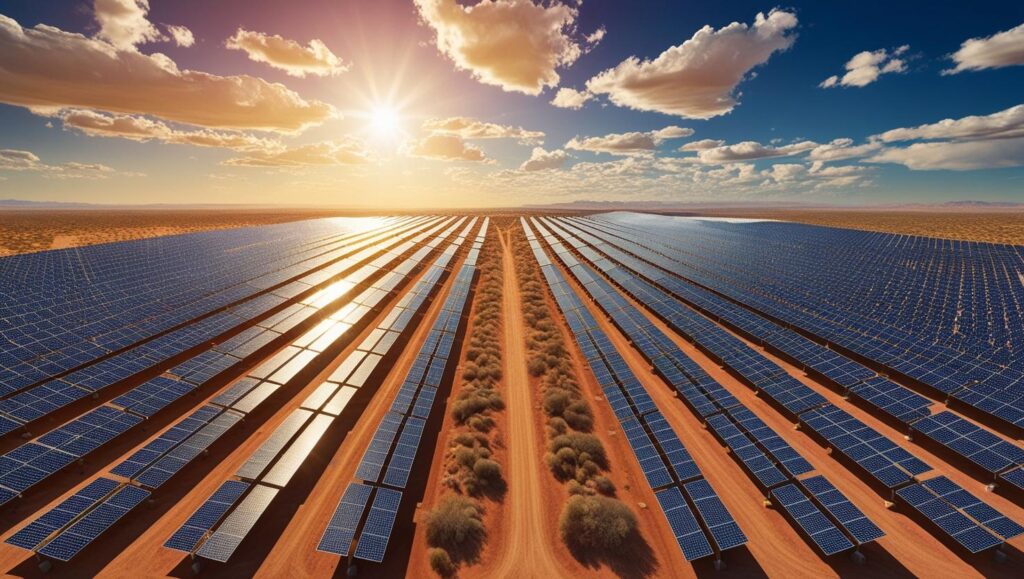




شمسی توانائی آج دستیاب قابل تجدید توانائی کی سب سے زیادہ موثر اور پائیدار شکلوں میں سے ایک ہے۔ شمسی توانائی کی پیداوار کو زیادہ سے زیادہ کرنے کا ایک طریقہ شمسی صفوں کا استعمال کرنا ہے، جو ایک ساتھ کام کرنے والے متعدد سولر پینلز پر مشتمل ہے۔ پینلز کے ان تاروں کو یا تو سیریز یا متوازی طور پر ترتیب دیا جا سکتا ہے، ہر ایک صارف کی توانائی کی ضروریات اور نظام کی پیمائش کے لحاظ سے الگ الگ فوائد پیش کرتا ہے۔
شمسی صفوں کو سمجھنا
سولر ارے بنیادی طور پر سولر پینلز کے گروپ ہوتے ہیں جو آپس میں جڑے ہوتے ہیں، جس سے وہ اسٹینڈ اسٹون پینلز کے مقابلے میں زیادہ مقدار میں بجلی پیدا کر سکتے ہیں۔ پینلز کو آپس میں جوڑنے سے، گھر کے مالکان اور کاروبار زیادہ استعمال کے مطالبات کو پورا کرنے کے لیے اپنی توانائی کی پیداوار میں اضافہ کر سکتے ہیں۔ ان پینلز کو وائرڈ کرنے کے طریقے پر منحصر ہے، توانائی کی پیداوار اور سسٹم کی کارکردگی نمایاں طور پر مختلف ہو سکتی ہے۔
سیریز اور متوازی وائرنگ
1. سیریز وائرنگ
سیریز کی ترتیب میں، پینل ایک ترتیب میں جڑے ہوئے ہیں۔ ایک پینل کا مثبت ٹرمینل اگلے کے منفی ٹرمینل سے جڑتا ہے۔ اس نقطہ نظر کی مخصوص خصوصیات ہیں:
- وولٹیج میں اضافہ: سرنی کا کل وولٹیج ہر پینل کے وولٹیج کے مجموعے کے برابر ہے۔ مثال کے طور پر، اگر آپ تین 12V پینلز کو جوڑتے ہیں، تو آپ کا کل آؤٹ پٹ 36V تک پہنچ سکتا ہے۔
- وشوسنییتا: اگر ایک پینل کی کارکردگی خراب ہو جاتی ہے یا وہ سایہ دار ہو جاتا ہے، تو یہ پوری سٹرنگ کی کل پیداوار کو کم کر سکتا ہے۔ اس صورت حال کو اکثر "کمزور لنک" مسئلہ کہا جاتا ہے۔ اگر ایک پینل کم طاقت پیدا کرتا ہے، تو پوری سیریز متاثر ہوتی ہے۔
ممکنہ خرابیوں کے باوجود، سیریز کی وائرنگ کچھ ایسے حالات میں فائدہ مند ہو سکتی ہے جہاں وولٹیج کی ضروریات زیادہ ہوں یا جب سسٹم کے اجزاء کو مخصوص وولٹیج کی درجہ بندیوں سے ملنے کی ضرورت ہو۔
2. متوازی وائرنگ
متوازی وائرنگ میں سولر پینلز کو اس طرح جوڑنا شامل ہے کہ تمام مثبت ٹرمینلز آپس میں منسلک ہوں اور تمام منفی ٹرمینلز آپس میں جڑے ہوں۔ یہ طریقہ منفرد فوائد بھی پیش کرتا ہے:
- موجودہ اضافہ: اس کنفیگریشن میں، ہر پینل کے ذریعہ تیار کردہ کرنٹ کو ملایا جاتا ہے جبکہ وولٹیج مستقل رہتا ہے۔ مثال کے طور پر، 10A پیدا کرنے والے تین پینل 30A کی کل موجودہ پیداوار حاصل کریں گے، مستقل وولٹیج کو برقرار رکھتے ہوئے۔
- شیڈنگ اثرات سے الگ تھلگ: اگر ایک پینل رکاوٹ بن جاتا ہے یا خرابی کا شکار ہو جاتا ہے، تو یہ دوسرے پینل کے آؤٹ پٹ پر نمایاں طور پر اثر انداز نہیں ہوتا ہے۔ یہ جزوی طور پر سایہ دار علاقوں میں متوازی وائرنگ کو فائدہ مند بناتا ہے۔
اپنے نظام شمسی کو اسکیل کرنا
1. سسٹم اسکیل ایبلٹی
شمسی توانائی کی تنصیب کی منصوبہ بندی کرتے وقت، سمجھیں کہ توسیع پذیری اہم ہے۔ جیسے جیسے آپ کی توانائی کی ضروریات بڑھتی ہیں، آپ مستقبل میں اپنے شمسی سرے کو بڑھا سکتے ہیں۔ یہاں یہ ہے کہ ان نظاموں کو کس طرح مؤثر طریقے سے پیمانہ کیا جا سکتا ہے:
- ابتدائی سیٹ اپ: چند پینلز سے شروع کریں اور توانائی کی بڑھتی ہوئی ضروریات کی بنیاد پر آہستہ آہستہ مزید اضافہ کریں۔ آپ کی وائرنگ کنفیگریشن پر منحصر ہے، آپ کارکردگی کو بہتر بناتے ہوئے اپنی صف کو بڑھا سکتے ہیں۔
- انورٹر مطابقت: یقینی بنائیں کہ آپ کا انورٹر آؤٹ پٹ میں ممکنہ اضافے کو سنبھال سکتا ہے۔ اگر آپ سیریز میں تار لگاتے ہیں، تو انورٹر کو کل وولٹیج میں اضافے کا حساب دینا ہوگا۔ دوسری طرف، متوازی نظاموں کے ساتھ، انورٹر کو زیادہ کرنٹ کا مؤثر طریقے سے انتظام کرنا چاہیے۔
- نگرانی اور کنٹرول: نگرانی کے نظام کو نافذ کریں جو ہر پینل کے آؤٹ پٹ کو ٹریک کر سکیں۔ سمارٹ انورٹرز مختلف کنفیگریشنز کو منظم کرنے میں مدد کر سکتے ہیں، کارکردگی اور وشوسنییتا دونوں کو بہتر بناتے ہوئے۔
2. ڈیزائن کے ذریعے کارکردگی
کارکردگی کلیدی ہے۔ اعلیٰ کارکردگی والے پینلز کا انتخاب کریں اور، اگر سیریز کنفیگریشن کا استعمال کر رہے ہیں، تو یقینی بنائیں کہ تمام پینل اسی طرح کے حالات میں کام کر سکتے ہیں۔ اگر زیادہ سے زیادہ آؤٹ پٹ ایک ترجیح ہے، تو سیریز اور متوازی صفوں کے امتزاج پر غور کریں، مخصوص حالات جیسے شیڈنگ یا واقفیت کی بنیاد پر بہترین کارکردگی کو آسان بناتے ہوئے۔
نتیجہ
چاہے سیریز میں وائرڈ ہوں یا متوازی، شمسی صفیں سولر پینلز سے توانائی کی پیداوار کو بڑھانے کا ایک مؤثر طریقہ پیش کرتی ہیں۔ صارف کی ضروریات، سسٹم ڈیزائن اور مقام کے لحاظ سے دونوں کنفیگریشنز کے اپنے فوائد ہیں۔ ان اختلافات کو سمجھ کر اور مستقبل کی ترقی پر غور کرتے ہوئے، صارفین ایک شمسی توانائی کا نظام ڈیزائن کر سکتے ہیں جو نہ صرف موجودہ تقاضوں کو پورا کرتا ہے بلکہ مستقبل کی توانائی کی ضروریات کے مطابق ڈھالنے کے قابل بھی ہے۔
شمسی توانائی اور قابل تجدید توانائی کے دیگر موضوعات کے بارے میں مزید بصیرت کے لیے، ان متعلقہ بلاگز کو دیکھیں اینڈرومیڈا توانائی:
- "شمسی توانائی کا مستقبل: دیکھنے کے لیے اختراعات"
- "سولر انورٹرز کو سمجھنا: کارکردگی کی کلید"
- "سولر پاور کے لیے انرجی سٹوریج سلوشنز"
وزٹ کریں۔ https://andromedaenergy.net/ شمسی حل کے بارے میں مزید معلومات کے لیے۔
مزید تفصیل کے لیے
https://www.renewableenergyworld.com/


جواب دیں